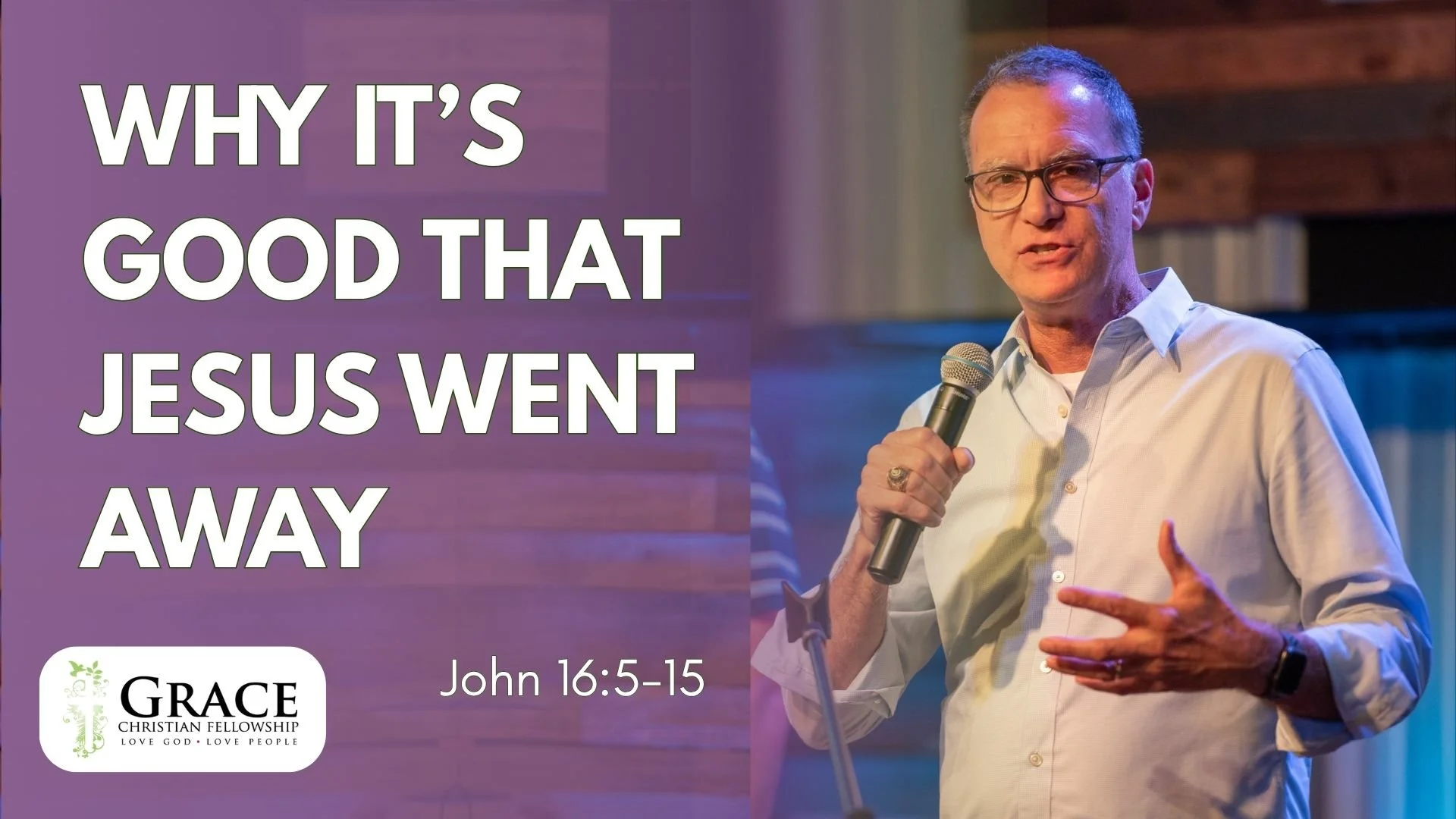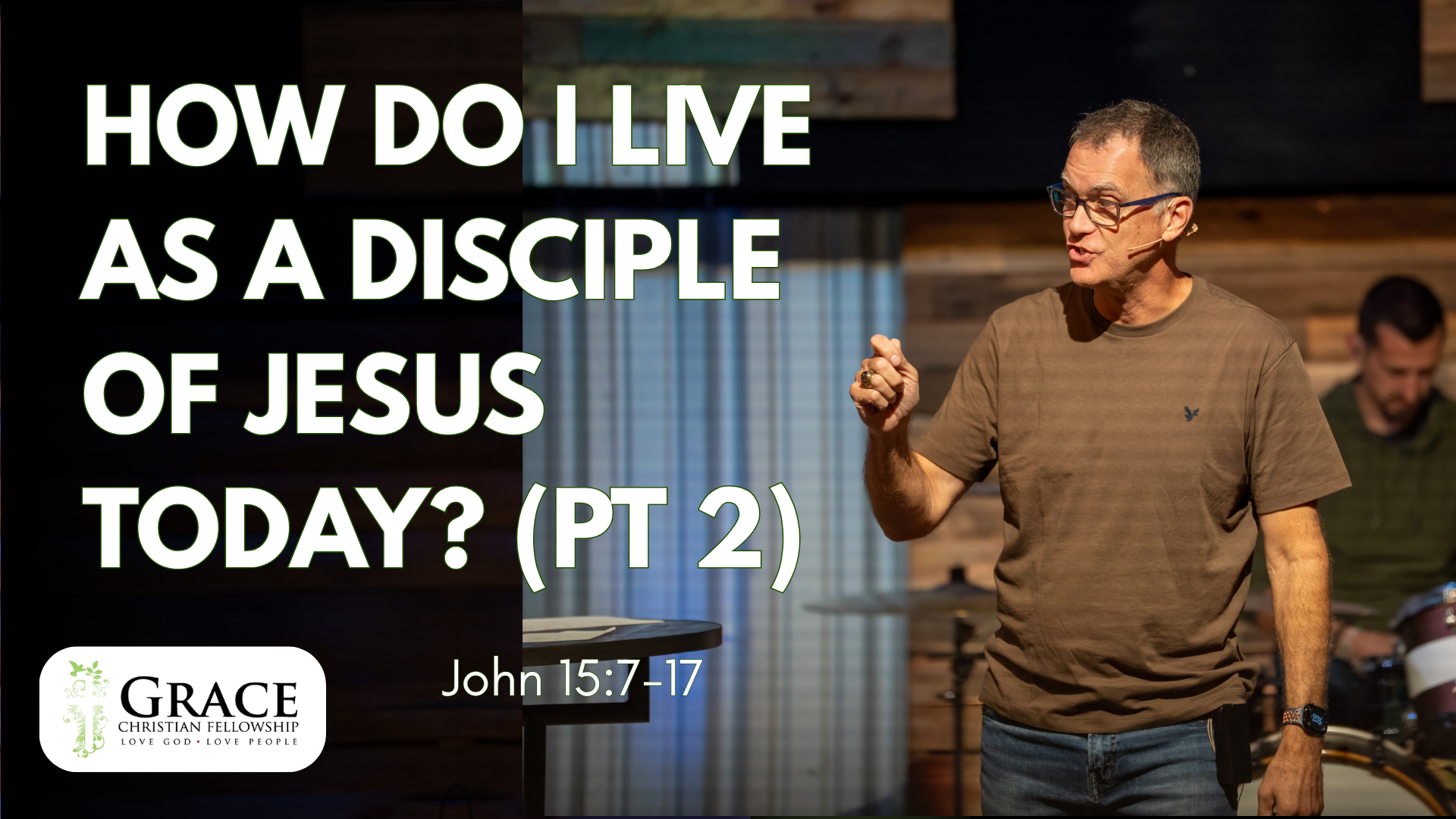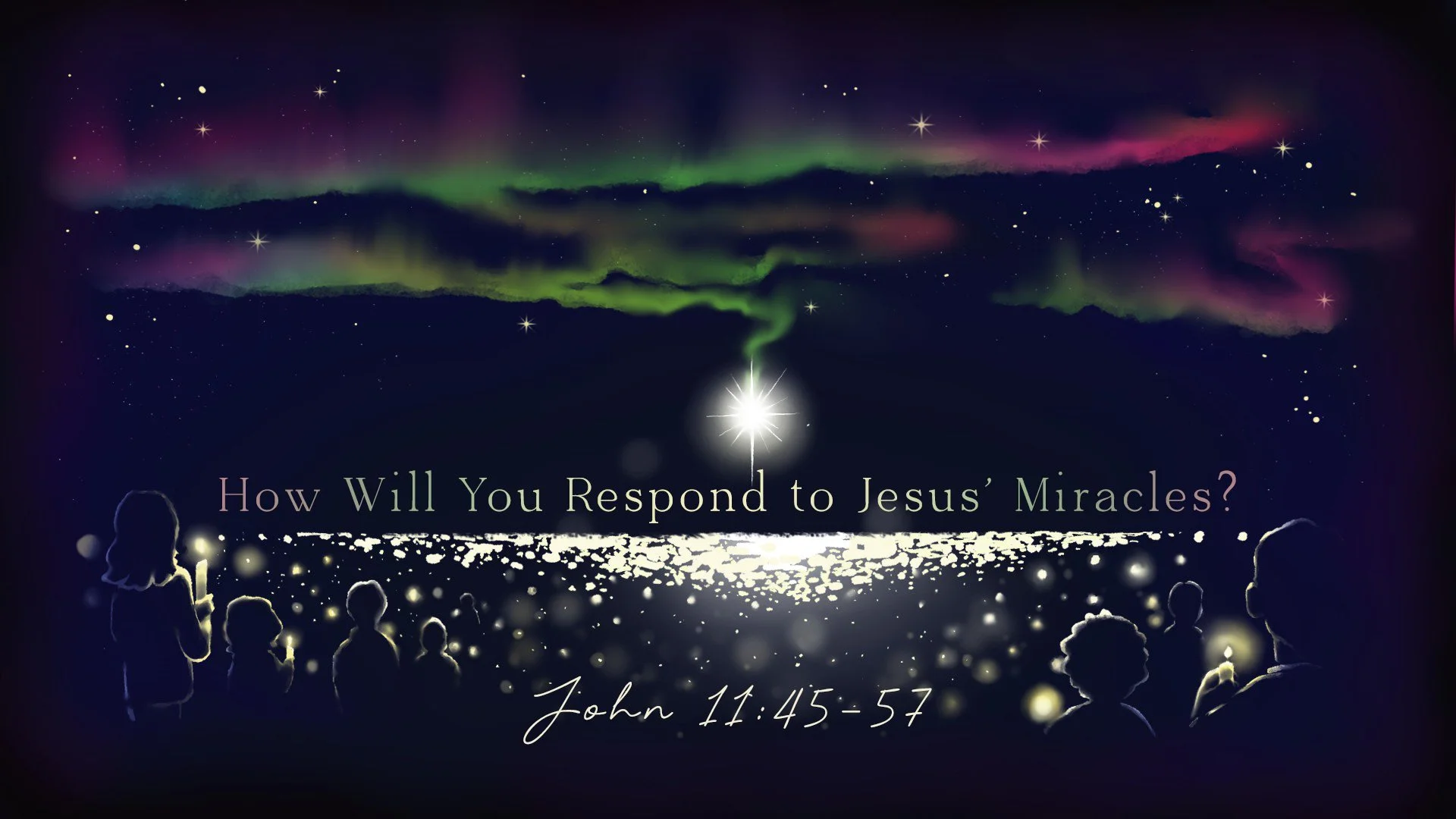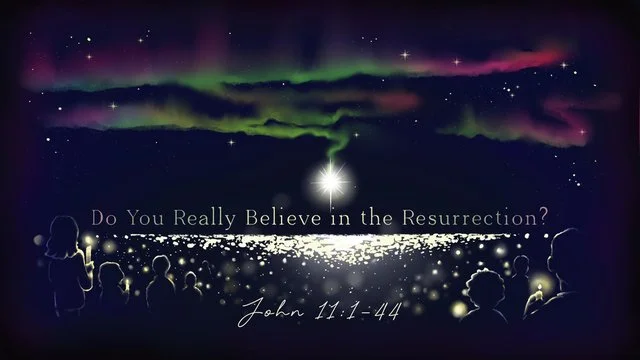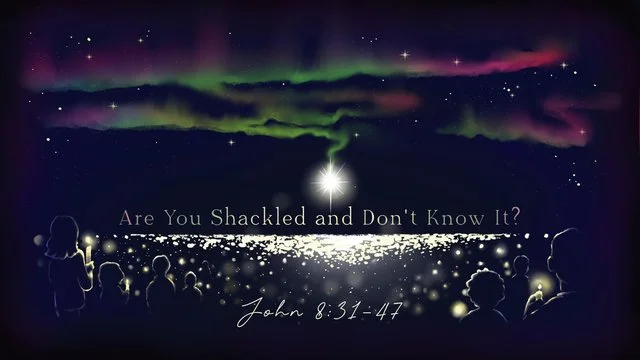Series: Signs & Glory
Title: Why does Jesus lead us into dark places?
Scripture: 📖 John 18:1-14 NIV
Preacher: Darien Roger Gabriel
Bottom Line: Jesus is fully in control even when everything looks out of control. Our best response is FOLLOWING King Jesus over FIGHTing or FLEEing.
INTRODUCTION
CONTEXT
📖 SERMON OUTLINE
CONCLUSION
NOTES
QUESTIONS TO CONSIDER
DISCUSSION QUESTIONS
🎥 YOUTUBE DESCRIPTION
MAIN REFERENCES USED
Opening prayer: Lord God, help us grow to be and do like Jesus, while abiding in him and leading others to do the same.
INTRODUCTION
"With the rise of global terrorism, world leaders have spoken a great deal about vanquishing evil.
But, as one writer in the *Guardian* pointed out, ‘Their rhetoric reveals a failure to accept that cruelty and conflict are basic human traits.’
As Albert Einstein said, ‘I do not fear the explosive power of the atom bomb. What I fear is the explosive power of *evil* in the human heart.'" -Nicky Gumbel
Dark evil in the human heart is why we have murder abortion, human trafficking, genocide, rape, betrayal, abandonment, terrorismand war.
Why does Jesus lead us into dark places when he could lead us to places that are less dark because those are the very places that need his light.
Light that exposes the truth and reveals reality for what it is. Light that speaks of a Hope that comes as light, life and love. And his name is Jesus.
BOTTOM LINE: Jesus is fully in control even when everything looks out of control. Our best response is FOLLOWING King Jesus over FIGHTing or FLEEing.
Our best response is to follow Jesus into our dark circumstances instead of fighting those circumstances or fleeing those circumstances. Let me show you where that comes from in this passage today.
CONTEXT
Jesus is now moving from active obedience to passive (surrendered) obedience. But this doesn't mean he isn't still in control. He's choosing to drink from "the cup" of God's wrath out of love for his Father and compassion for us. This is the beginning of his deep drink of God's wrath for our sake and God's glory.
BOTTOM LINE: Jesus is fully in control even when everything looks out of control. Our best response is FOLLOWING King Jesus over FIGHTing or FLEEing.
The call of the passage is clear: Follow Jesus by surrendering to the Father’s will, even when it’s painful, confusing, or costly.
SERMON OUTLINE (with help from ChatGPT and several commentaries)
Why does Jesus lead us into dark places?
Because we’re in a war against the kingdom of darkness.
Because we, as children of light, are how Jesus rescues people from darkness.
⸻
1. Jesus Displays Sovereign Power and Authority in the Dark (vv. 1–9, 12–14)
What the text shows:
• He leads the disciples into the garden (18:1).
• He knows exactly what is coming (18:4).
• He steps forward, not backward (18:4).
• He declares “I AM,” and the soldiers fall (18:5–6). Strong winds (ultimate Monday night) and bright lights.
• He protects His disciples (“Let these men go”) (18:8).
• He submits to arrest not because He is overpowered but because He is obeying the Father’s plan (18:12).
• He is taken to Annas, yet remains the real authority in the room (18:13–14).
2. How We Respond in Dark Circumstances (vv. 10–11 + implied vv. 1–9)
A. Two wrong responses (the disciples):
1. Fight – Peter’s misguided zeal (vv. 10–11)
• He acts in fear, not faith.
• He tries to take control rather than trust God’s plan.
• “Put your sword away”—Jesus rebukes him.
2. Flight – the disciples’ fearful abandonment (implied v. 8; explicit in Synoptics)
• Jesus protects them… yet they still run.
• They panic and scatter in different directions.
• They trust their instincts, not their Savior.
B. One right response (Jesus):
3. Follow - by surrendering to the Father’s will
• “Shall I not drink the cup the Father has given me?” (v. 11)
• Jesus models the response His disciples fail to give.
CONCLUSION
“Imagine a father walking beside a railroad track with his three-year-old son. There is danger at hand, so the father holds the child’s hand. If the boy’s safety depends on the strength of his grasp on his father’s hand, he is in grave danger—he could lose his grip and wander into the path of a train. What keeps the child from destruction is not the boy’s grip on his father’s hand but the father’s grip on the child’s hand. That is what Jesus was asking the Father to do—to keep His grip on the disciples.” -Nicky Gumbel
What a great picture of why we can feel good about following Jesus into dark places. We trust him to hold on to us no matter what.
BOTTOM LINE: Jesus is fully in control even when everything looks out of control. Our best response is FOLLOWING King Jesus over FIGHTing or FLEEing.
INVITATION
What about you?
Peter puts it all in perspective in his first sermon:
““Therefore let all Israel be assured of this: God has made this Jesus, whom you crucified, both Lord and Messiah.” When the people heard this, they were cut to the heart and said to Peter and the other apostles, “Brothers, what shall we do?” Peter replied, “Repent and be baptized, every one of you, in the name of Jesus Christ for the forgiveness of your sins. And you will receive the gift of the Holy Spirit. The promise is for you and your children and for all who are far off—for all whom the Lord our God will call.”” Acts 2:36-39 NIV
How do we respond? Answer 2 questions:
Take out a card or piece of paper right now. Write down the answer to these questions:
What is God saying to me right now?
What am I going to do about it? Write this down on a sheet of paper.
What I hear you saying, Lord, is ___________________.
[my name] is going to believe/do __________________________________________________ as a result.
Finally, share this with your Home or Mission group this week when you gather as a testimony about what God is doing in your life. You don’t have to get too specific to give him praise.
Lord's Supper, 1 Cor 11:23-26 is good passage.
Also, say something like, "Christ has died, Christ is risen, Christ will come again." (past, present, and future)
Pray
NOTES
When Jesus prays that believers “may be one,” He is asking the Father to create a deep, spiritual unity among His followers—a unity patterned after the perfect oneness of the Father and the Son. This unity is not primarily institutional or organizational; it is the supernatural, Spirit-given unity that flows from our shared union with Christ. Because we belong to Him, we belong to one another.
This oneness is:
1. Spiritual
Rooted in the new birth and the indwelling Spirit. All who are in Christ share one life, one love, and one purpose.
2. Relational
Marked by love, humility, forgiveness, and mutual care—the same love the Father and Son share.
3. Missional
This unity shows the watching world that Jesus truly came from God. Visible love among believers makes the invisible gospel credible.
In short:
“Being one in Christ” means sharing in the life, love, and mission of the Father and Son—so that the world sees Jesus through His people.
QUESTIONS TO CONSIDER
What do I want them to know?
Why do I want them to know it?
What do I want them to do?
Why do I want them to do it?
How do they do this?
DISCUSSION QUESTIONS
Discovery Bible Study process: https://www.dbsguide.org/
Read the passage together.
Retell the story in your own words.
Discovery the story
What does this story tell me about God?
What does this story tell me about people?
If this is really true, what should I do?
What is God saying to you right now? (Write this down)
What are you going to do about it? (Write this down)
Who am I going to tell about this?
Find our sermons, podcasts, discussion questions and notes at https://www.gracetoday.net/podcast
Alternate Discussion Questions (by Jeff Vanderstelt): Based on this passage:
Who is God?
What has he done/is he doing/is he going to do?
Who am I? (In light of 1 & 2)
What do I do? (In light of who I am)
How do I do it?
Final Questions (Write this down)
What is God saying to you right now?
What are you going to do about it?
🎥 YOUTUBE DESCRIPTION
Description:
What matters most to Jesus’ heart? In John 17, we overhear the Son of God praying—for His glory, for His disciples, and for every future believer. Just hours before the cross, Jesus prays that we would live for God’s glory, be sanctified by His truth, and be united in His love. This is the prayer that still shapes the world today.
Bottom Line: Jesus prayed for His glory, our sanctification, and our unity—so the world would know His love.
Chapters:
0:00 – Introduction
2:45 – Jesus Prays for His Glory (John 17:1–5)
10:20 – Jesus Prays for Our Sanctification (John 17:6–19)
19:45 – Jesus Prays for Our Unity (John 17:20–26)
28:50 – How We Live as the Answer to Jesus’ Prayer
YOUTUBE DESCRIPTION
📖 Sermon Title: Why Can You Trust Jesus Even When Life Goes Dark?
🕊️ Scripture: John 18:1–14
🎙️ Pastor Darien Gabriel | Grace Christian Fellowship
When Jesus enters the Garden of Gethsemane, everything around Him looks out of control—an armed mob approaches, Judas betrays Him, and His closest disciples fall apart in panic. Yet John shows us something stunning: Jesus is the only one who remains calm, composed, and completely in control.
In this message, we look at how Jesus displays sovereign power in the darkness and how His followers often respond with fight, flight, or faithful surrender. When life gets confusing, frightening, or heartbreaking, this passage answers one core question:
Why can you trust Jesus even when your world feels like it’s falling apart?
Whether you’re facing uncertainty, fear, or the weight of difficult circumstances, this passage offers hope and courage for anyone learning to follow Jesus in the dark.
🔑 Key Takeaways:
Jesus’ arrest wasn’t an accident—He leads the moment.
Peter fights, the disciples flee, but Jesus faithfully follows the Father’s will.
When life gets dark, we can trust Jesus because He never loses control.
If this message encourages you, don’t forget to like, share, and subscribe for weekly sermons and teaching from GCF.
If you want a shorter or more SEO-optimized version, I can craft that too.
MAIN REFERENCES USED
“John,” by R. Kent Hughes, Preaching the Word Commentary, Edited by Kent Hughes
Exalting Jesus in John, by Matt Carter & Josh Wredberg
The Gospels & Epistles of John, FF Bruce
John, RC Sproul
John, Köstenberger
The Gospel According to John, DA Carson
Let's Study John, Mark Johnston
The Light Has Come, Leslie Newbigin (TLHC)
The Visual Word, Patrick Schreiner (TVW)
“Look at the Book” by John Piper (LATB)
“The Bible Knowledge Commentary” by Walvoord, Zuck (BKC)
“The Bible Exposition Commentary” by Warren Wiersbe (BEC)
Thru The Bible with J. Vernon McGee (TTB)
Outline Bible, D Willmington (OB)
NIV Study Bible (NIVSB) https://www.biblica.com/resources/scholar-notes/niv-study-bible/
Chronological Life Application Study Bible (NLT)
ESV Study Bible (ESVSB) https://www.esv.org
The Bible Project https://bibleproject.com
Nicky Gumbel bible reading plan app or via YouVersion
ChatGPT AI
Read More



